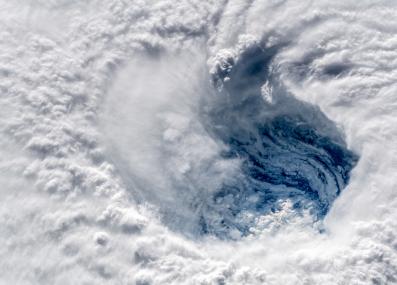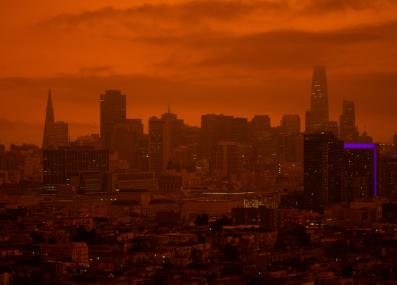Have a question?
How is climate change affecting the weather today?
Our planet is not only getting warmer—it’s also getting wetter. That shows up in ways both subtle and alarming.
September 30, 2020
The Earth has warmed roughly 1.8 ℉ since 1850. This means that people almost everywhere are, on average, experiencing warmer weather. But this rise in temperature is also changing humidity and rainfall, with consequences for extreme weather events, says Professor Paul O’Gorman of the MIT Program in Atmospheres, Oceans and Climate.
Warmer weather is causing more humidity. We often think about how humid it feels outside: that muggy feeling is caused by a high amount of water vapor in the air. And warmer air can hold more water; in fact, says O’Gorman, humidity rises about 3.5% for every degree Fahrenheit that the temperature rises. The higher the humidity, the harder it is for our bodies to cool off by sweating, which can be uncomfortable but also increases health risks from exhaustion, fainting, and even life-threatening heat stroke.
Humidity also affects rainfall. Experts agree that, in warmer climates, major storms are dropping more rain. Rain gauges show that the rainiest day each year has gotten roughly 3.5% wetter for every degree Fahrenheit of global warming, the same rise we’re seeing in humidity. This makes sense, says O’Gorman: if there’s more water vapor in the air when a storm starts, more rain will fall during that storm. In some regions, rainfall could rise even more as storms develop stronger winds. And the most intense tropical cyclones, or hurricanes, are expected to become more frequent too. Recent terrible hurricane seasons in the Atlantic are likely a preview of the future. In 2017, for instance, Hurricane Harvey dropped more than 60 inches of rain on Texas’s gulf coast. MIT’s Professor Kerry Emanuel has calculated that, as recently as the 1990s, the state of Texas had only a 1% chance of seeing a storm with that much rain in a given year; now, the chances are closer to 6%.1
It’s less clear how rising temperatures have affected the total number of storms. Most models suggest that both tropical cyclones (seen near the equator) and extratropical cyclones (seen in middle or higher latitudes) will become less frequent due to climate change. While fewer storms overall may seem like a good thing, the fall in extratropical cyclones, which we can already see in the Northern Hemisphere, has actually created an unexpected problem: it tends to make air pollution worse, offsetting some of the gains from reductions in emissions. “Particularly in the summer,” O’Gorman says, “these cyclones move the air around, bringing air from higher in the atmosphere and ventilating the air that’s near the surface, which can remove air pollution and stop heatwaves.” With fewer extratropical cyclones, warm, polluted air is left to linger lower in the atmosphere.
If we’re seeing heavier rainfall, we should also see more flooding, right? It turns out it depends. Some parts of the United States, like the Northeast, have seen increasing flooding in recent years, while other areas, like the Southwest, are seeing fewer floods. “The current thinking is that streamflow [the amount of water flowing in rivers and streams] is more complicated than just how much rain fell in the last day,” says O’Gorman. As weather patterns shift, regions that are getting drier on average might see less flooding even after a spectacular storm.
Curious about the effects of climate change on specific weather events? Researchers can run simulations of today’s storms under past climate conditions, allowing us to see what aspects of our current weather are the result of climate change. World Weather Attribution is an international effort to share this data with the public. The website publishes analyses of dozens of recent extreme weather events around the world, explaining how these events were affected by the climate change we are already experiencing.
1 Emanuel, Kerry.








